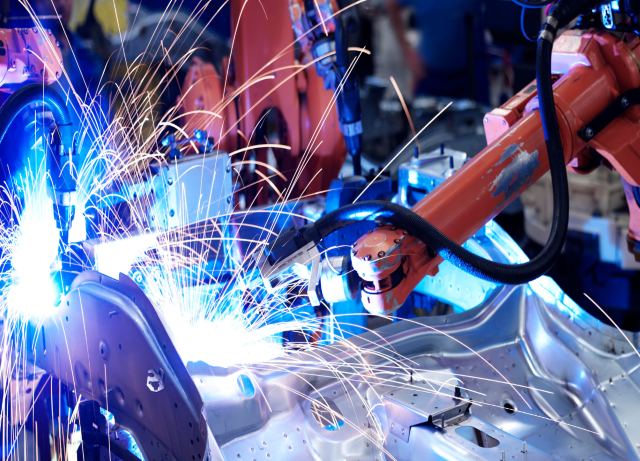Within the Industrial Internet of Things (IIoT) smart sensors as well as actuators can be utilized to boost production efficiency. IIoT solutions help manufacturers operate more efficiently with connected assets, real-time analytics monitoring, and analytics to be agile, well-informed and in control of their operations through this industrial Internet. Simply put, IIoT posits that smart machines are more efficient than humans in the process of collecting and analyzing information in real-time and also transferring critical data to make better business decision-making.
The connected sensors as well as actuators boost business intelligence by allowing businesses to detect issues and inefficiencies earlier, which saves both time and cash. The IIoT is a huge opportunity for improving the efficiency of supply chain processes traceability and efficiency of supply chain processes eco-friendly manufacturing techniques as well as quality control, in particular. IIoT is vital to processes such as Predictive Maintenance (PdM) and improved fields service and energy management and the tracking of assets in an industrial environment.
What is the IIoT work?

The Internet of Things (IIoT) is a system of smart devices that are connected to form systems that gather information, exchange, as well as analyze information. A common industrial IoT ecosystem comprises:
Public or private infrastructure for data communication.
applications and analytics that provide business insight from data
Storage of data for IIoT device generated data and also for individuals.
Connected devices that are able to be able to detect, communicate, and even store information about them.
These smart assets and edge devices send information directly to the communications network. This is the place where data can be converted into useful data about how a specific device is performing. Both predictive maintenance as well as optimization of business processes can be achieved with this information.
Which industries are using IIoT?

The IIoT is used by a variety of companies. Automobile manufacturing utilizes IIoT devices, for instance. Industrial robots are extensively used in the automobile industry and the IIoT helps to prevent maintenance of the systems and detect any problems before they cause production disruptions.
The IIoT technology is also extensively used in the agricultural sector. Industrial sensors collect data on soil moisture, nutrients, as well as other elements to aid farmers to produce the best crop feasible. Industries IoT equipment is currently being utilized within the petroleum and natural gas industry. Some oil companies have fleets of unmanned aircrafts that inspect pipelines with visual and thermal imaging. To ensure safety these data are merged with data from a variety of sensors.
What benefits does the IIoT have to offer?
- Predictive maintenance
- Asset tracking
- Facility management
- Just-in-Time manufacturing
- Connecting remote assets
- User-friendly interfaces that are more intuitive.
- Information sharing among plants
- Process and behavior monitoring, and improved use of the machine.

The ability to carry out pre-planned maintenance is one of the most commonly cited advantages of IIoT devices that are used in the manufacturing industry. Companies can anticipate the time when machines will require maintenance based on the data provided in real time through IIoT technologies. This way it’s possible to plan the needed maintenance be performed prior to a malfunction occurs. This can be particularly beneficial for production lines, where a malfunctioning machine could result in a shutdown of the line and result in significant costs. A company can improve its efficiency by adopting preventative measures to deal with maintenance problems.
The increased effectiveness of field service is a further benefit. Field service technicians can fix minor issues with equipment used by customers before they disrupt customers thanks to IIoT technology. These technologies are able to detect potential issues before they turn into serious ones. These technologies can also give technicians in the field with knowledge of the equipment they will need for completing the repair. This way that, when a repair request is initiated technicians will carry the parts needed.
Another advantage of IIoT is the ability to track assets. Asset management systems permit manufacturers, suppliers, as well as customers to track the location of goods, their condition, and the condition of the goods in all of the chain. In the event that objects are damaged or are at risk of becoming damaged by the equipment, it instantly informs the appropriate parties. The system gives them the chance to take preventive or corrective actions.
IIoT can also improve the customer experience. When product designers and manufacturers integrate their devices with the Internet of Things, they will be able to develop more user-centric product roadmaps. In this way, information about the way customers interact with the products of manufacturers can be gathered and analyzed. Additionally, IIoT improves facility management. Manufacturing equipment is susceptible to wear and tear which is exacerbated by certain manufacturing conditions. Changes in temperature, vibrations and other elements that can cause less than ideal operating conditions are monitored through sensors.
IIoT is revolutionizing the way manufacturers work. IIoT-connected machines can collect and share live data more precisely and with greater consistency than was previously feasible. The data can help organizations dismantle data silos, access data at all levels and make better business decisions based on information.
Summary
IoT devices are used more often to help with digital transformations. This is particularly applicable to businesses who are working to digitalize their supply chains and manufacturing processes. IIoT information will eventually be integrated in big data analysis as they progress and allow businesses to detect changes in the real-time and take the appropriate actions.
